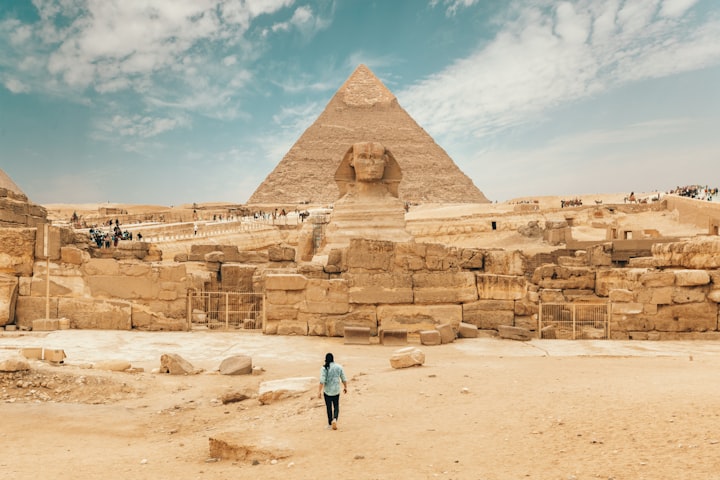
The Egyptian pyramids can be examined as the most impressive stone structures developed by the standard individuals living during the antiquated occasions.
Today, the Egyptian pyramids are analyzed by numerous researchers and modelers as instances of the one-of-a-kind retro design and as images of Egyptian craftsmanship.
Subsequently, the pharaohs of the Old Kingdom in Egypt were customarily covered inside the burial chambers, which were called 'pyramids' as a result of their particular structure where four sides looking like triangles met at the highest point of the enormous development to point at the sky.
Note that the antiquated Egyptians zeroed in on developing two commonplace types of pyramids, known as the 'progression' and 'genuine' pyramids. The primary pyramids portrayed by the 'ventured' structure were worked by the old Egyptians at Saqqara in 2650 B.C.E[1].
Disregarding how the plan of the genuine pyramids is examined and portrayed by scientists all the more effectively, focus on the plan attributes of the primary ventured pyramids in Egypt due to their extraordinary job for the improvement of the particular old Egyptian craftsmanship and engineering styles.
The soonest ventured pyramid was worked for the pharaoh Djoser or Zoser at Saqqara in 2650 B.C.E. The pyramid was developed from the stone to be performed forever and to represent the force of the pharaoh.
That is the reason many individuals from all over the nation could see its six gigantic stone strides of 196 feet high (Fig. 1).
However, some more rectangular mastabas were added to the past development to frame the pyramid[3].
The pyramid plan for the pharaoh Djoser was created by the famous Egyptian rationalist, doctor, and planner Imhotep or Imuthes.
This conspicuous individual was the priest of the pharaoh, and he added to the spread of the pharaoh's standing as the most socially created individual in Egypt.
The possibility of the priest's initiation according to the plan and development of the pyramid is upheld with Imhotep's name engraved on the platform of the pharaoh's sculpture, and this sculpture was found in the pharaoh's tomb[4].
The initial step was the method involved with cleaning the desert level off of the pointless sand. Subsequently, it was essential to uncover the level surface stowed away under the sand to give space to the building.
The main pyramids had the underground part and the cone seen over the ground. That is the reason the constructions were based on bare limestone.
Focus on the way that "an enormous pit was then quarried in the stone almost 24 m profound, with a stone slashed flight of stairs driving down into it. The lower part of the pit was fixed with rock quarried at the First Cataract, almost 800 km toward the south"[5].
Most importantly, it was necessary to assemble the underground loads and displays.
Along these lines, eleven huge chambers, the flight of stairs, and the section which prompted them "were then implanted in stonework up to the surface, or more them an incredible workmanship was worked, around 12 m high with the side length of roughly 120 m"[6].
The pyramid type was accomplished with the assistance of building the second more modest square shape over the actual rectangular construction, which framed the fundament of the pyramid.
Then, at that point, the essential third, fourth, fifth, and 6th square shapes were built and put on the fundament to complete the particular pyramid with the assistance of building its means.
The massive pyramids were never implicit seclusion from different structures. Consequently, the old pyramids structure critical design buildings, which are significant due to their social and social jobs.
Springer and Morris express that the pyramid worked for the pharaoh Djoser is encircled by numerous critical structures where the main ones are the North and South Pavilions, "enormous sanctuaries and patios, cut veneers, segments, stages, altars, churches, and life-sized sculptures.






Comments
There are no comments for this story
Be the first to respond and start the conversation.